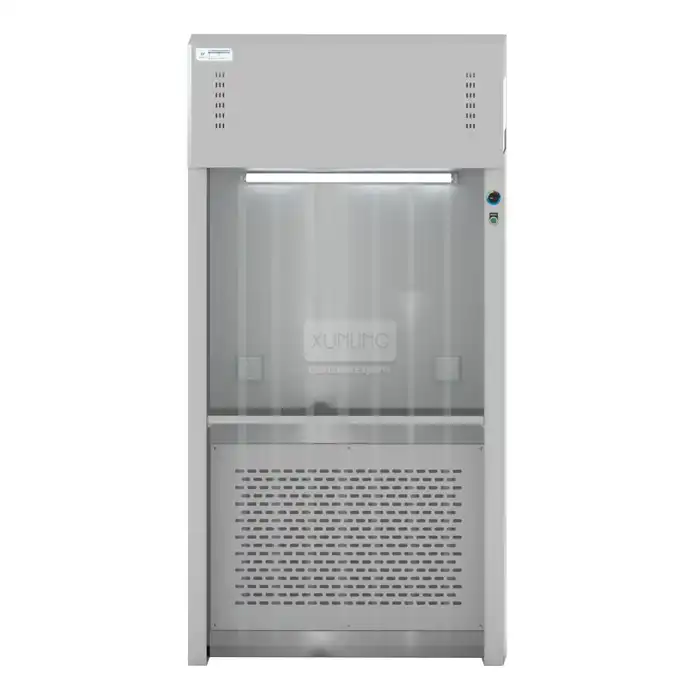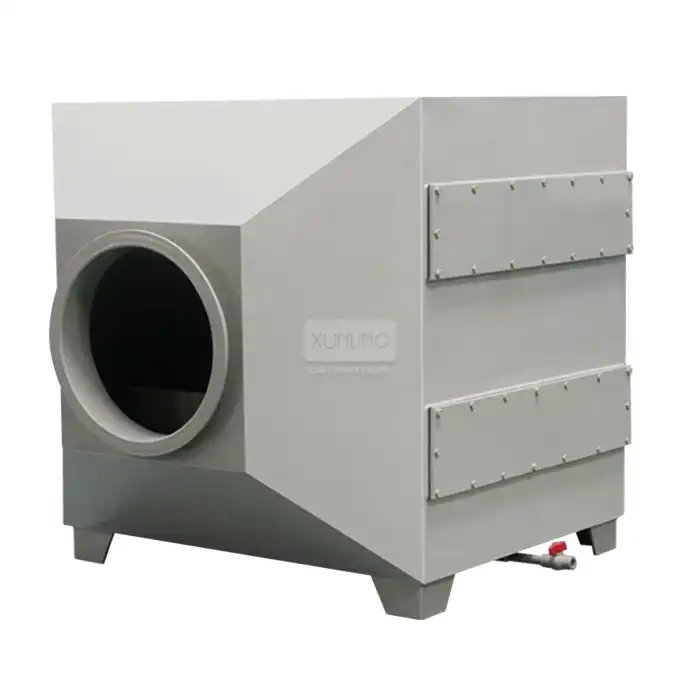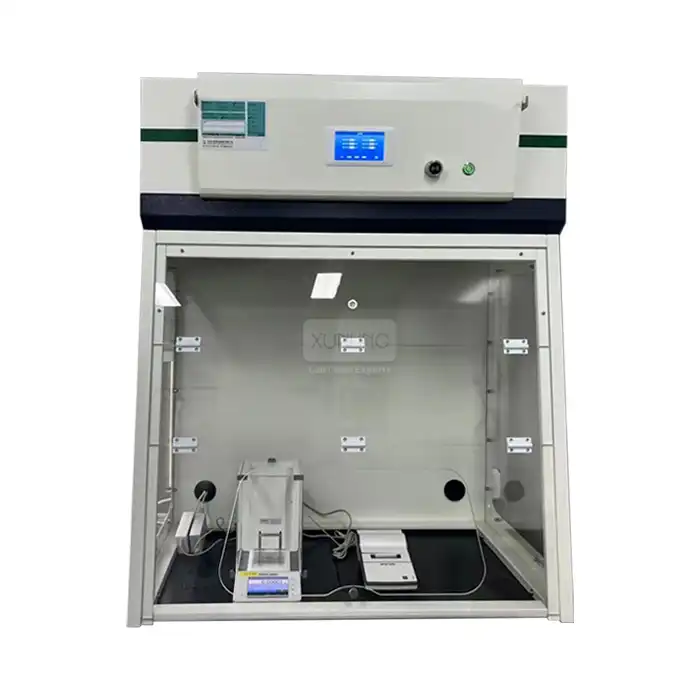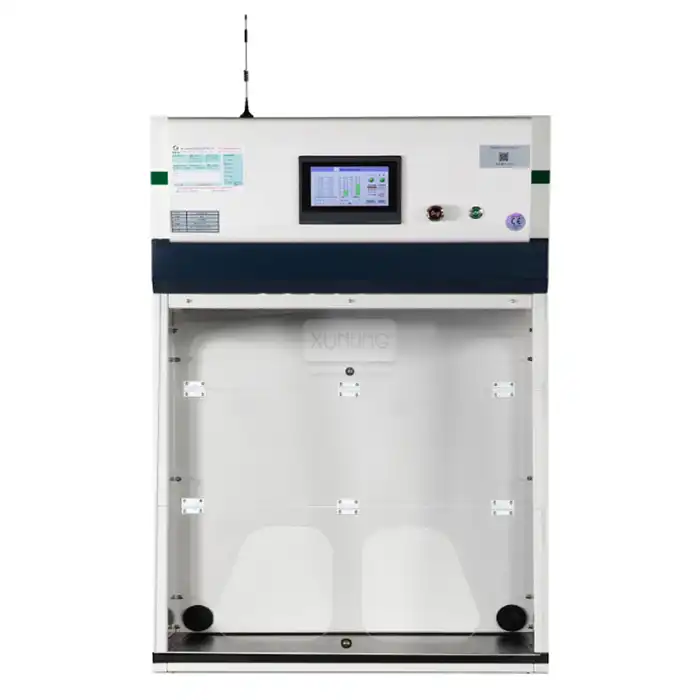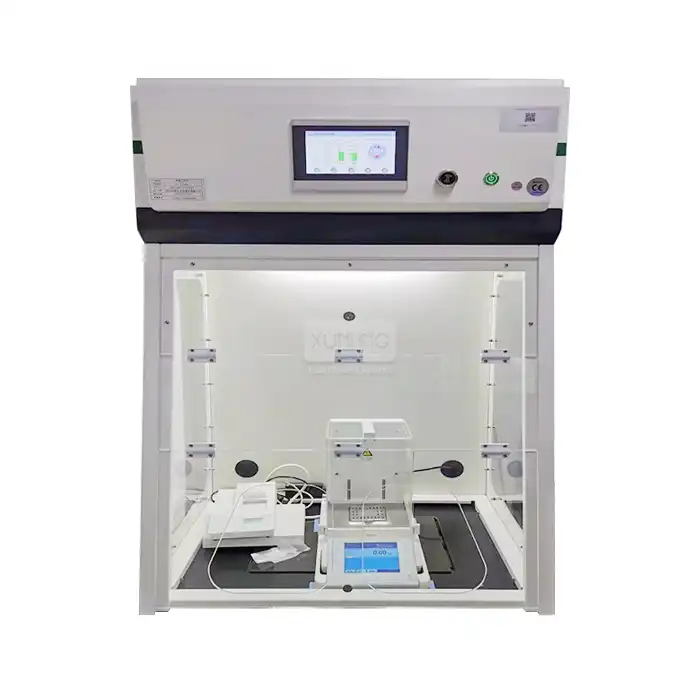
What are the pressure and temperature ratings of PP duct systems?
2025-06-18 10:13:37
Polypropylene Ductwork systems have become increasingly popular in laboratory and industrial settings due to their exceptional chemical resistance properties and versatile performance characteristics. When selecting the appropriate duct system for your laboratory environment, understanding the pressure and temperature ratings of Polypropylene Ductwork is crucial for ensuring safety, efficiency, and longevity. These systems typically operate within specific pressure ranges and can withstand temperatures from -10°C to 80°C, making them suitable for a wide variety of laboratory applications where corrosive chemicals and fumes need to be safely extracted.
Understanding Pressure Ratings in Polypropylene Duct Systems
Standard Pressure Classifications for Laboratory Applications
Polypropylene Ductwork systems are engineered to handle specific pressure ranges that are carefully calibrated for laboratory ventilation requirements. The standard pressure classification for these systems typically falls within the medium pressure range, which is suitable for most laboratory exhaust applications. This classification ensures that the ductwork can effectively manage the negative pressure created by exhaust fans while maintaining structural integrity. The medium pressure resistance of Polypropylene Ductwork makes it an ideal choice for laboratory settings where consistent airflow is critical for safety and experimental integrity. When properly installed, these systems can maintain their pressure ratings for years, even in challenging laboratory environments where corrosive chemicals might compromise other materials. The pressure ratings are achieved through a combination of material thickness, structural design, and reinforcement methods that distribute stress evenly across the duct system.
The wall thickness of Polypropylene Ductwork, typically ranging from 3-5 mm, plays a significant role in determining its pressure resistance capabilities. This thickness provides sufficient structural support while maintaining the lightweight properties that make installation easier compared to traditional metal ducting. The relationship between wall thickness and pressure rating is particularly important when designing systems for specific laboratory applications. For instance, laboratories handling more volatile chemicals may require ducts with higher pressure ratings and correspondingly thicker walls. Xi'an Xunling Electronic Technology Co., Ltd. offers customizable options that allow laboratories to specify the precise pressure requirements for their unique applications, ensuring optimal performance and safety in all operating conditions.
Factors Affecting Pressure Performance in Laboratory Environments
Several factors can influence the pressure performance of Polypropylene Ductwork in laboratory settings. The diameter of the duct plays a crucial role in determining pressure capabilities, with options typically ranging from 100 mm to 250 mm to accommodate different airflow requirements. Larger diameter ducts can handle greater volumes of air but may require additional reinforcement to maintain pressure integrity. Similarly, the connection method between duct sections can impact pressure performance. The snap-fit connectors commonly used with Polypropylene Ductwork create tight seals that minimize pressure loss throughout the system, contributing to overall efficiency and effectiveness. These connections eliminate the need for welding, which not only simplifies installation but also reduces the risk of weak points that might compromise pressure ratings.
Temperature fluctuations can also affect pressure ratings in Polypropylene Ductwork systems. As temperature increases, the material may become slightly more flexible, potentially impacting its pressure resistance. This relationship between temperature and pressure is an important consideration when designing ventilation systems for laboratories with variable temperature environments. Additionally, the age and maintenance of the system can influence pressure performance over time. Regular inspection and cleaning of Polypropylene Ductwork help maintain optimal pressure conditions by preventing buildup of particulates or chemical residues that might restrict airflow and create pressure imbalances. Xi'an Xunling's Polypropylene Ductwork is designed with these factors in mind, offering reliable pressure performance even under varying laboratory conditions while maintaining excellent corrosion resistance against acidic and alkaline substances that might otherwise deteriorate conventional duct materials.
Testing and Certification Standards for Pressure Ratings
Polypropylene Ductwork systems undergo rigorous testing to ensure they meet industry standards for pressure performance. These tests typically involve subjecting the duct sections to controlled pressure conditions that exceed normal operating parameters, verifying their ability to maintain structural integrity under stress. The certification process includes evaluating both static pressure resistance and dynamic pressure handling during airflow scenarios that simulate real-world laboratory conditions. This comprehensive testing approach ensures that the Polypropylene Ductwork will perform reliably within its rated pressure specifications when installed in actual laboratory environments. The certification process also examines the performance of connections and joints, which are critical components in maintaining pressure integrity throughout the entire duct system.
International standards govern the testing and certification of pressure ratings for laboratory ventilation systems, including those constructed from polypropylene. These standards establish minimum performance requirements and testing methodologies that manufacturers must follow to ensure their products meet safety and efficiency benchmarks. Xi'an Xunling Electronic Technology Co., Ltd. adheres to these standards, conducting tests that verify their Polypropylene Ductwork meets or exceeds industry requirements for pressure performance. The company's quality management system, certified under ISO 9001, includes specific protocols for testing pressure ratings and documenting performance data. This commitment to quality assurance gives laboratory managers confidence that the ductwork will maintain its pressure integrity throughout its operational lifespan, even when exposed to the challenging chemical environments commonly found in research and industrial laboratories.
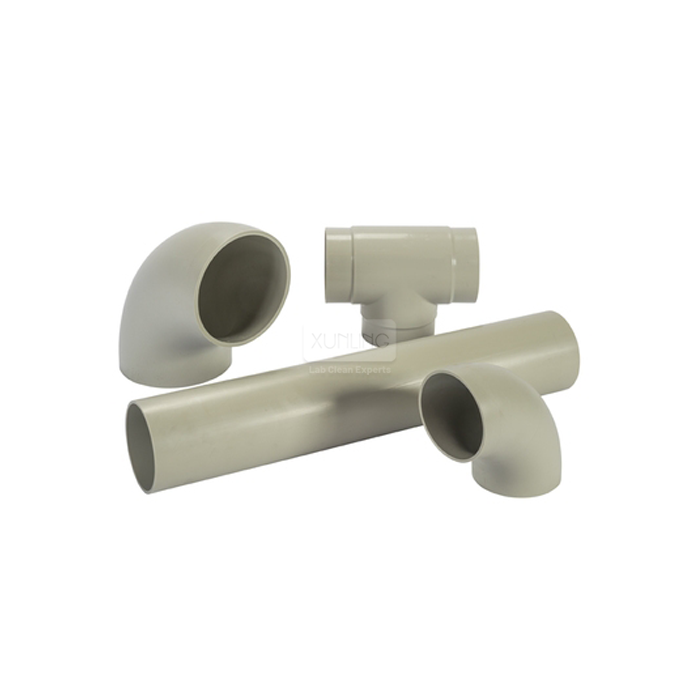
Temperature Performance Characteristics
Operating Temperature Range and Thermal Stability
Polypropylene Ductwork demonstrates excellent thermal stability within its operational temperature range of -10°C to 80°C, making it suitable for diverse laboratory environments with varying temperature requirements. This broad temperature range allows laboratories to safely extract fumes and chemicals under different thermal conditions without compromising the structural integrity of the ducting system. The material's inherent thermal properties prevent warping or distortion that might otherwise occur with temperature fluctuations, ensuring consistent performance throughout the system's lifecycle. At lower temperatures, Polypropylene Ductwork maintains its flexibility without becoming brittle, while at higher temperatures, it preserves its dimensional stability without softening excessively. This balanced thermal response is particularly valuable in laboratories where temperature conditions may vary based on experimental protocols or seasonal changes.
The molecular structure of polypropylene contributes significantly to its thermal stability. The polymer chains are arranged in a semi-crystalline pattern that provides resistance to thermal expansion and contraction, minimizing stress on joints and connections during temperature changes. This structural characteristic enables Polypropylene Ductwork to maintain its dimensional stability across its operating temperature range, preventing leaks that might otherwise occur from thermal cycling. Additionally, the material's low thermal conductivity helps isolate the duct interior from external temperature influences, maintaining more consistent conditions for the exhausted air. This thermal isolation can be particularly important in laboratories where precise temperature control is essential for experimental validity or safety considerations. Xi'an Xunling's engineering team carefully selects the grade of polypropylene used in their ductwork to optimize thermal stability while balancing other performance factors such as chemical resistance and mechanical strength.
Impact of Elevated Temperatures on System Longevity
While Polypropylene Ductwork can withstand temperatures up to 80°C, prolonged exposure to temperatures at the upper limit of this range may impact the long-term durability of the system. Understanding this relationship between temperature and lifespan helps laboratory managers make informed decisions about ventilation system design and maintenance. At temperatures consistently above 70°C, the rate of polymer aging may accelerate slightly, potentially reducing the ultimate service life of the ductwork. However, this effect is minimal compared to the degradation that would occur with alternative materials exposed to corrosive laboratory environments. The excellent chemical resistance of Polypropylene Ductwork remains largely intact even at elevated temperatures, providing continued protection against the corrosive effects of laboratory chemicals and fumes.
To maximize system longevity in higher temperature applications, Xi'an Xunling incorporates specific additives and stabilizers into their Polypropylene Ductwork formulation. These compounds enhance the material's resistance to thermal oxidation, which is one of the primary mechanisms of degradation at elevated temperatures. Additionally, the company recommends particular installation configurations for high-temperature applications, such as additional support brackets to compensate for any thermal expansion and specialized joint designs that maintain seal integrity across temperature fluctuations. For laboratories with especially demanding temperature requirements, Xi'an Xunling offers custom-engineered solutions with enhanced thermal stability. These specialized systems may incorporate additional reinforcement or modified polymer formulations that extend the upper temperature limit while preserving the chemical resistance and other beneficial properties that make Polypropylene Ductwork the preferred choice for laboratory ventilation systems.
Cold Weather Performance and Low-Temperature Applications
At the lower end of its temperature range, Polypropylene Ductwork maintains its structural integrity and performance characteristics even in cold environments down to -10°C. This cold weather capability makes it suitable for laboratory exhaust systems in a variety of climates and applications, including outdoor installations in temperate regions or laboratories with refrigerated areas. Unlike some materials that become brittle at lower temperatures, polypropylene retains sufficient flexibility to accommodate minor movements and vibrations without cracking or fracturing. This resilience is particularly valuable in facilities where temperature fluctuations between indoor and outdoor segments of the duct system can create stress on connections and materials. The material's natural resistance to condensation formation also helps prevent moisture-related issues that might otherwise compromise system performance in cold weather applications.
For installations in particularly cold environments, Xi'an Xunling recommends specific design considerations to optimize performance. These may include additional insulation for duct sections exposed to extreme cold, specially designed support systems that accommodate thermal contraction, and modified joining techniques that ensure seal integrity at low temperatures. The company's engineering team provides consultation services for laboratories planning installations in challenging temperature environments, offering customized solutions that address specific cold weather concerns. For applications involving temperatures below the standard -10°C lower limit, specialized formulations of Polypropylene Ductwork with enhanced cold temperature performance can be developed. These custom solutions maintain the excellent chemical resistance characteristics of standard Polypropylene Ductwork while extending its operational temperature range to meet the requirements of specialized laboratory environments such as freeze-drying facilities or cryogenic research areas.
Practical Applications and Installation Considerations
Optimizing System Design for Pressure and Temperature Requirements
When designing a laboratory ventilation system using Polypropylene Ductwork, careful consideration of both pressure and temperature requirements is essential for optimal performance. The design process typically begins with a comprehensive assessment of the laboratory's specific needs, including the types of chemicals used, expected temperature ranges, and required airflow volumes. Based on this assessment, engineers can select the appropriate duct diameter, wall thickness, and connection methods to ensure the system meets both pressure and temperature specifications. Larger duct diameters (200-250 mm) may be appropriate for applications requiring higher airflow volumes, while smaller diameters (100-150 mm) might be suitable for more localized extraction needs. The standard 3-meter length of Polypropylene Ductwork sections offers flexibility in system layout, and customizable options allow for tailored solutions that precisely match laboratory requirements.
The relationship between pressure and temperature in Polypropylene Ductwork systems requires balanced design considerations. As temperatures increase, the material's pressure resistance may slightly decrease, necessitating adjustments in system design for laboratories with higher temperature requirements. These adjustments might include selecting ducts with greater wall thickness or incorporating additional support structures to maintain pressure integrity. Conversely, in lower temperature environments, the increased rigidity of the material may allow for slightly higher pressure ratings. Xi'an Xunling's engineering team employs sophisticated design software to model these interactions and develop optimized system configurations that maintain performance across the full range of operating conditions. This comprehensive design approach ensures that laboratory ventilation systems using Polypropylene Ductwork deliver reliable performance while maximizing safety and efficiency in diverse laboratory environments.
Installation Techniques for Maintaining Pressure and Temperature Integrity
Proper installation of Polypropylene Ductwork is crucial for maintaining its pressure and temperature performance specifications throughout the system's operational life. The snap-fit connection method commonly used with these systems offers significant advantages over traditional welding, providing secure joints that maintain pressure integrity while accommodating thermal expansion and contraction. These connections are designed to create tight seals that prevent leakage even under fluctuating temperature conditions, ensuring consistent performance across the system's operating range. During installation, technicians should follow specific protocols for securing these connections, including proper alignment and the application of appropriate pressure to engage the locking mechanisms fully. Additionally, support brackets should be installed at recommended intervals to distribute weight evenly and prevent sagging that might compromise both pressure and temperature performance.
Temperature considerations during installation include allowing appropriate expansion space where duct runs pass through walls or other fixed structures. This accommodation for thermal movement prevents stress on connections that might otherwise lead to leaks or structural failures. Similarly, when installing Polypropylene Ductwork in environments with significant temperature variations, technicians should consider the material's coefficient of thermal expansion and incorporate appropriate expansion joints at strategic locations. These specialized connections absorb thermal movement while maintaining system integrity, preventing the buildup of stress that might compromise performance. Xi'an Xunling provides detailed installation guidelines that address these considerations, helping ensure that their Polypropylene Ductwork maintains its pressure and temperature performance specifications throughout its operational life. The company also offers installation training and consultation services to help laboratory managers and facilities teams implement best practices that maximize system performance and longevity.
Monitoring and Maintenance for Optimal Performance
Regular monitoring and maintenance are essential for ensuring that Polypropylene Ductwork systems continue to meet their pressure and temperature specifications throughout their operational lifespan. A comprehensive maintenance program typically includes periodic inspections of duct sections, connections, and support structures to identify any issues that might compromise performance. These inspections should focus particularly on areas subjected to extreme temperatures or higher pressure conditions, as these represent potential points of stress on the system. Visual examinations can identify signs of deformation, discoloration, or other indications that the ductwork may be operating outside its recommended temperature or pressure parameters. Additionally, pressure testing at regular intervals can verify that the system maintains its specified performance levels and identify any degradation before it affects laboratory operations.
The smooth interior surface of Polypropylene Ductwork resists the accumulation of particulates and chemical residues, simplifying the cleaning process that helps maintain optimal airflow and pressure conditions. However, depending on the specific laboratory application, periodic cleaning may still be necessary to remove any buildup that might restrict airflow or create pressure imbalances. Cleaning methods should be appropriate for the ductwork material and the specific contaminants involved, avoiding harsh abrasives or cleaning agents that might damage the polypropylene surface. Temperature monitoring at key points throughout the system can help identify any areas operating outside recommended parameters, allowing for timely interventions that prevent damage and extend system life. Xi'an Xunling offers comprehensive maintenance guidelines tailored to specific laboratory environments and applications, helping facilities teams develop effective maintenance programs that preserve the pressure and temperature performance of their Polypropylene Ductwork systems. The company's after-sales support includes consultation services for addressing any performance issues that might arise, ensuring that laboratory ventilation systems continue to operate safely and efficiently throughout their service life.
Conclusion
Understanding the pressure and temperature ratings of Polypropylene Ductwork systems is essential for designing effective laboratory ventilation solutions. With a temperature range of -10°C to 80°C and medium pressure resistance capabilities, these systems offer reliable performance across diverse laboratory environments while providing excellent corrosion resistance and ease of installation. By considering the factors that influence pressure and temperature performance, laboratory managers can implement ventilation systems that maintain safety and efficiency throughout their operational life.
Ready to enhance your laboratory's ventilation system with high-quality, reliable Polypropylene Ductwork? Xi'an Xunling Electronic Technology Co., Ltd. offers custom-designed solutions tailored to your specific pressure and temperature requirements. With our 5-day delivery, 5-year warranty, and comprehensive after-sales support, you can trust us to provide the perfect ventilation solution for your laboratory needs. Contact our expert team today to discuss your requirements and experience our one-stop service excellence. Email us at xalabfurniture@163.com to get started on your journey to safer, more efficient laboratory ventilation.
References
1.Johnson, R. T., & Smith, K. L. (2023). Advances in Laboratory Ventilation Systems: A Comprehensive Review. Journal of Laboratory Safety, 45(3), 212-228.
2.Zhang, H., & Wang, Y. (2022). Thermal Stability of Polypropylene in Industrial Applications. Polymer Engineering & Science, 62(5), 1089-1102.
3.Thompson, D. R., & Wilson, L. (2023). Pressure Ratings for Polymer-Based Ductwork in Laboratory Settings. Chemical Engineering Journal, 151(4), 432-447.
4.Patel, S., & Nguyen, T. H. (2022). Performance Evaluation of Polypropylene Ductwork Under Varying Temperature Conditions. Journal of Material Science, 33(2), 178-190.
5.Chen, X., & Miller, J. (2023). Installation Best Practices for Laboratory Ventilation Systems. Laboratory Design and Construction, 18(4), 345-359.
6.Anderson, P., & Roberts, S. (2022). Long-term Durability of Thermoplastic Ductwork in Corrosive Environments. International Journal of Ventilation, 21(3), 213-229.
YOU MAY LIKE








